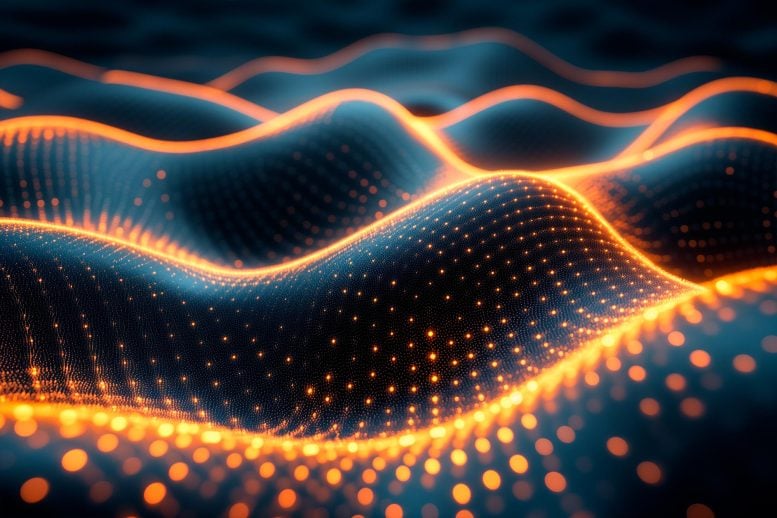
Through experiments at the BER II neutron source and its High-Field Magnet, researchers have discovered new quantum states in the material SrCu2(BO3)2 under extreme magnetic fields. Identifying a spin-nematic phase that resembles the condensation of bosonic Cooper pairs, this study emphasizes the utility of neutron scattering in exploring unknown aspects of quantum materials, offering insights into complex many-body systems under conditions of strong frustration. Credit: SciTechDaily.com
New states of order can arise in quantum magnetic materials under magnetic fields. An international team has now gained new insights into these special states of matter through experiments at the Berlin neutron source BER II and its High-Field Magnet. BER II served science until the end of 2019 and has since been shut down. Results from data at BER II are still being published.
“We measured in November 2019, our experiment was one of the very last ones performed on the High-Field Magnet at BER,” Dr. Ellen Fogh points out. The physicist leads a team at the Laboratory of Quantum Magnetism at the Ecole Polytechnique Fédérale de Lausanne (EPFL) and has now published intriguing new insights in quantum materials obtained in collaboration with colleagues from Japan, Qatar, and Switzerland.
“Many effects in matter only become visible under extreme conditions, i.e. temperatures close to zero kelvin and magnetic fields above 20 Tesla,” she says. The perfect place to examine these effects was at the neutron source BER II, where an HZB team has set up a unique High-Field Magnet, reaching up to nearly 26 Teslas.
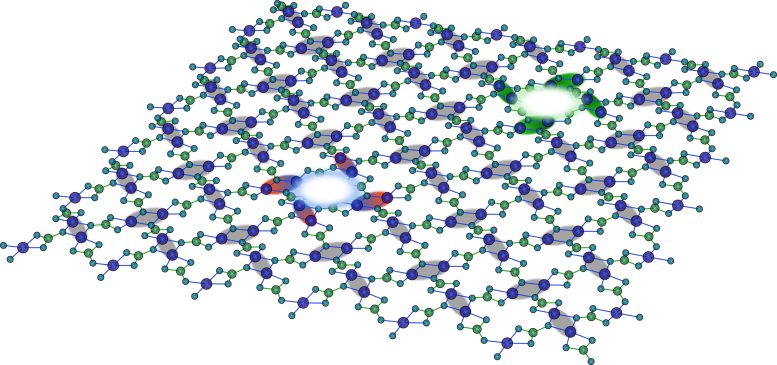
Schematic illustration of a 2D spin-lattice with orthogonal orientation of spin pairs. Bound pair of magnons are represented by the red/blue and green pinwheels. Credit: EPFL
Challenges in Data Interpretation
“The evaluation took a lot of time,” she says. This is because the neutron scattering data do not automatically provide a picture, but have to be interpreted. This requires convincing theoretical models. “We played a game of ping-pong with a team of theorists, but now we have some very interesting results.”
Fogh and team analyzed samples of SrCu2(BO3)2 — a model system for ideal frustration in a two-dimensional (2D) spin system. It consists of spin pairs that are arranged orthogonally on a square lattice and influence each other in different ways. This “ideally frustrated” geometry leads to many unconventional effects, which are described in terms of entangled quantum states and their excitations (magnons). Magnetic order in such materials is usually described as Bose-Einstein Condensation (BEC) of magnons.
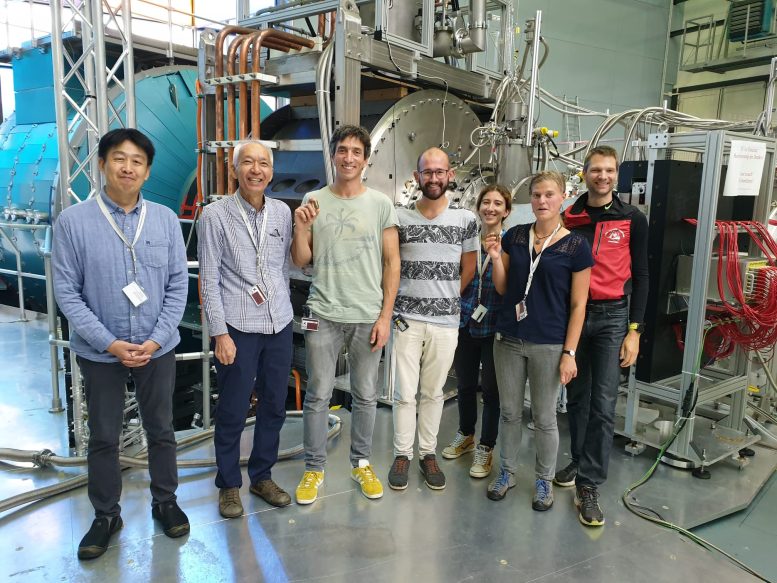
Physicists in front of the High-Field Magnet at BER II during one of the last measurements. Some of the team members did not contribute to this paper (ambient pressure) but to a next publication on the behaviour of the model system under high pressure. Names from left to right: Koji Munakata, Kazuhisa Kakurai, Gaétan Giriat, Luc Testa, Jana Pásztorová, Ellen Fogh and Henrik M. Rønnow. Credit: EPFL/HZB
“We wanted to find out whether this magnon BEC also occurs in our model system at high magnetic fields, or whether there is an alternative mechanism,” says Fogh. The neutron scattering experiment at the High-Field Magnet of BER II was ideally suited for this purpose: “We were able to measure spin excitations of SrCu2(BO3)2 up to 25.9 T and reproduce the experimental spectra with high accuracy using theoretical models.” The experiments took place at ambient pressure and temperatures close to absolute zero, at 200 millikelvin.
The analysis and interpretation of the measurement data shows that a spin-nematic phase is formed under these extremely high magnetic fields. In place of single magnons, it is bound pairs of magnons condensing in this phase. There is even an analogy to superconductivity, suggesting that the spin-nematic phase in SrCu2(BO3)2 is best understood as a condensate of bosonic Cooper pairs.
The results show that neutron scattering experiments in extremely high magnetic fields can be used to explore previously unknown regions of matter, in particular correlated phases of many-body systems. “Under conditions of strong frustration and controlled extremes, many new states and orders can still be found,” concludes Fogh.
Reference: “Field-induced bound-state condensation and spin-nematic phase in SrCu2(BO3)2 revealed by neutron scattering up to 25.9 T” by Ellen Fogh, Mithilesh Nayak, Oleksandr Prokhnenko, Maciej Bartkowiak, Koji Munakata, Jian-Rui Soh, Alexandra A. Turrini, Mohamed E. Zayed, Ekaterina Pomjakushina, Hiroshi Kageyama, Hiroyuki Nojiri, Kazuhisa Kakurai, Bruce Normand, Frédéric Mila and Henrik M. Rønnow, 10 January 2024, Nature Communications.
DOI: 10.1038/s41467-023-44115-z

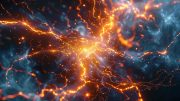
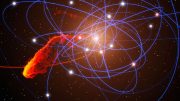

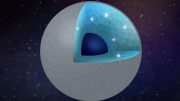
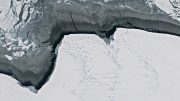
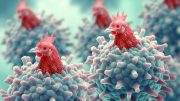
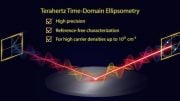

Very good!
According to topological vortex gravitational field theory, spin creates everything, spin creates the world, spin creates the future. Studying topological vortices can greatly expand the boundaries of humanity cognition.
Good luck to you all.
All observable movements in the physical world are inseparable from the interaction of topological vortices, including human observational behavior itself.
The universe does not do algebra, formula or fraction. The universe is geometrythe, and is the superposition, deflection, and twisting of geometric shapes.
Today, we have already entered the era of the internet. With the help of artificial intelligence and big data, discussions on scientific knowledge have become open and transparent. However, a group of editors of so-called academic journals (such as Physical Review Letters, Nature, Science, etc.) are self righteous, self proclaimed, fooling the public, lack remorse, and mystifying themselves. They only care about their own so-called sufficiently high priority rating, general significance, discipline, novelty, etc., and do not care about what science and pseudoscience are.
Science and pseudoscience are not determined by a publication, an organization or a person, nor by you or me, but by mathematics the final say. Physical models must be based on mathematics or mathematical models in order to be scientific, convincing, and in accordance with natural laws.
The origin of geometry lies in the concerns of everyday life. The branch of geometry (mathematics) known as topology has become a cornerstone of modern physics. Topological vortex and antivortex are two bidirectional coupled continuous chaotic systems. They exhibit parity conservation, charge conjugation, and time reversal symmetry. The synchronization effect is extremely important in their interactions. The synchronization effect of the superposition, deflection, and twisting of multiple or countless topological vortices will make spacetime motion more complex. To understand this complex world, physics should respect the authenticity of topological vortex in low dimensional spacetime, rather than simply relying on a few formulas, numbers, or imagined particles.
Spin is a natural property of topological vortices. Spin is synchronized with energy, spin is synchronized with gravitation, spin is synchronized with time, spin is synchronized with evolution. The perpetually swirling topological vortices defy traditional physics’ expectations. One physical properties of topological vortices is them to spontaneously begin to change periodically in time, even though the system does not experience corresponding periodic interference. Therefore, in the interaction of topological vortices, time is both absolute and relative,and physics often requires treating space and time at the same level.
Low-dimensional spacetime matter is the foundation of high-dimensional spacetime matter. Low-dimensional spacetime matter (such as topological vortex) can form new material structures and derive more complex physical properties via interactions and self-organization. It is extremely wrong and irresponsible to imagine low dimensional spacetime matter using high-dimensional spacetime matter,such as a cat in quantum mechanics.
Science must follow mathematical rules. For example, the Standard Model (SM) is considered to be one of the most significant achievements of physics in the 20th century. However, the magnetic moment of μ particle is larger than expected, revealed by a g-2 experiment at Fermilab, suggests that the established theory (such as SM) of fundamental particles is incomplete. Furthermore, the SM omitting gravitation, it not involved the time problem and when the particle movement starts. Mathematics is the foundation of science. Physics must respect the scientific nature of mathematics and mathematical models. The SM must be based on mathematical models in order to be scientific, convincing, and in line with natural laws.
I hope researchers are not fooled by the pseudoscientific theories of the Physical Review Letters (PRL), and hope more people dare to stand up and fight against rampant pseudoscience.
The so-called academic journals (such as Physical Review Letters, Nature, Science, etc.) firmly believe that two high-dimensional spacetime objects (such as two sets of cobalt-60) rotating in opposite directions can be transformed into two objects that mirror each other, is a typical case of pseudoscience rampant.
If researchers are really interested in Science and Physics, you can browse https://zhuanlan.zhihu.com/p/643404671 and https://zhuanlan.zhihu.com/p/595280873.
The Physical Review Letters (PRL) is the most evil, ugly, and dirty publication in the history of science. Nature and Science have been influenced by Physical Review Letters (PRL) and are even more notorious. The behavior of these pseudo-academic publications has seriously hindered the progress and development of human society in science and technology.
I am well aware that my relentless repetition can make some people unhappy, but in the fight against rampant pseudoscience, that’s all I can do.